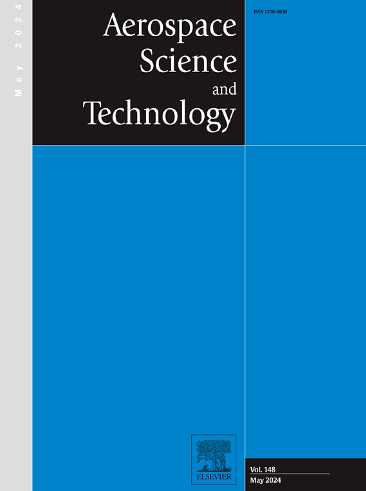Robust parameter design for rocket boosters using deep Gaussian process
IF 5
1区 工程技术
Q1 ENGINEERING, AEROSPACE
引用次数: 0
Abstract
In aerospace engineering optimization, multiple correlated non-stationary responses (NSRs) are often produced. Ignoring the non-stationary characteristic of data may impact the prediction accuracy of response surface models and the reliability of optimization solutions. Traditional stationary Gaussian process model struggles to handle non-stationary data with limited samples. Recently, deep Gaussian process (DGP) has gained popularity in non-stationary models due to its ability to handle rapidly changing data. However, efficiently inferring the posterior distribution of DGP remains a significant challenge. This paper uses DGP surrogate model based on Bayesian inference to simulate non-stationary response surfaces and proposes the Chain Rule Hamiltonian Monte Carlo (CRHMC) algorithm to efficiently and accurately sample the posterior distribution. Additionally, a new multivariate quality loss function (MQLF) is introduced to optimize multiple correlated non-stationary responses and ensure the robustness of optimal design parameters. Numerical examples and a real rocket booster engineering case demonstrate the superiority of the proposed method in fast computation and robust optimization against other competing methods.
利用深度高斯过程进行火箭助推器的稳健参数设计
在航空航天工程优化中,经常会产生多个相关非平稳响应。忽略数据的非平稳特性会影响响应面模型的预测精度和优化解的可靠性。传统的平稳高斯过程模型难以处理有限样本的非平稳数据。近年来,深度高斯过程(deep Gaussian process, DGP)因其处理快速变化数据的能力在非平稳模型中得到了广泛的应用。然而,有效推断DGP的后验分布仍然是一个重大挑战。本文采用基于贝叶斯推理的DGP代理模型模拟非平稳响应面,并提出链式规则哈密顿蒙特卡罗(CRHMC)算法对后验分布进行高效、准确的采样。此外,引入了一种新的多变量质量损失函数(MQLF)来优化多个相关非平稳响应,并保证了优化设计参数的鲁棒性。数值算例和实际火箭助推器工程实例表明,该方法具有计算速度快、优化鲁棒性好等优点。
本文章由计算机程序翻译,如有差异,请以英文原文为准。
求助全文
约1分钟内获得全文
求助全文
来源期刊

Aerospace Science and Technology
工程技术-工程:宇航
CiteScore
10.30
自引率
28.60%
发文量
654
审稿时长
54 days
期刊介绍:
Aerospace Science and Technology publishes articles of outstanding scientific quality. Each article is reviewed by two referees. The journal welcomes papers from a wide range of countries. This journal publishes original papers, review articles and short communications related to all fields of aerospace research, fundamental and applied, potential applications of which are clearly related to:
• The design and the manufacture of aircraft, helicopters, missiles, launchers and satellites
• The control of their environment
• The study of various systems they are involved in, as supports or as targets.
Authors are invited to submit papers on new advances in the following topics to aerospace applications:
• Fluid dynamics
• Energetics and propulsion
• Materials and structures
• Flight mechanics
• Navigation, guidance and control
• Acoustics
• Optics
• Electromagnetism and radar
• Signal and image processing
• Information processing
• Data fusion
• Decision aid
• Human behaviour
• Robotics and intelligent systems
• Complex system engineering.
Etc.
 求助内容:
求助内容: 应助结果提醒方式:
应助结果提醒方式:


